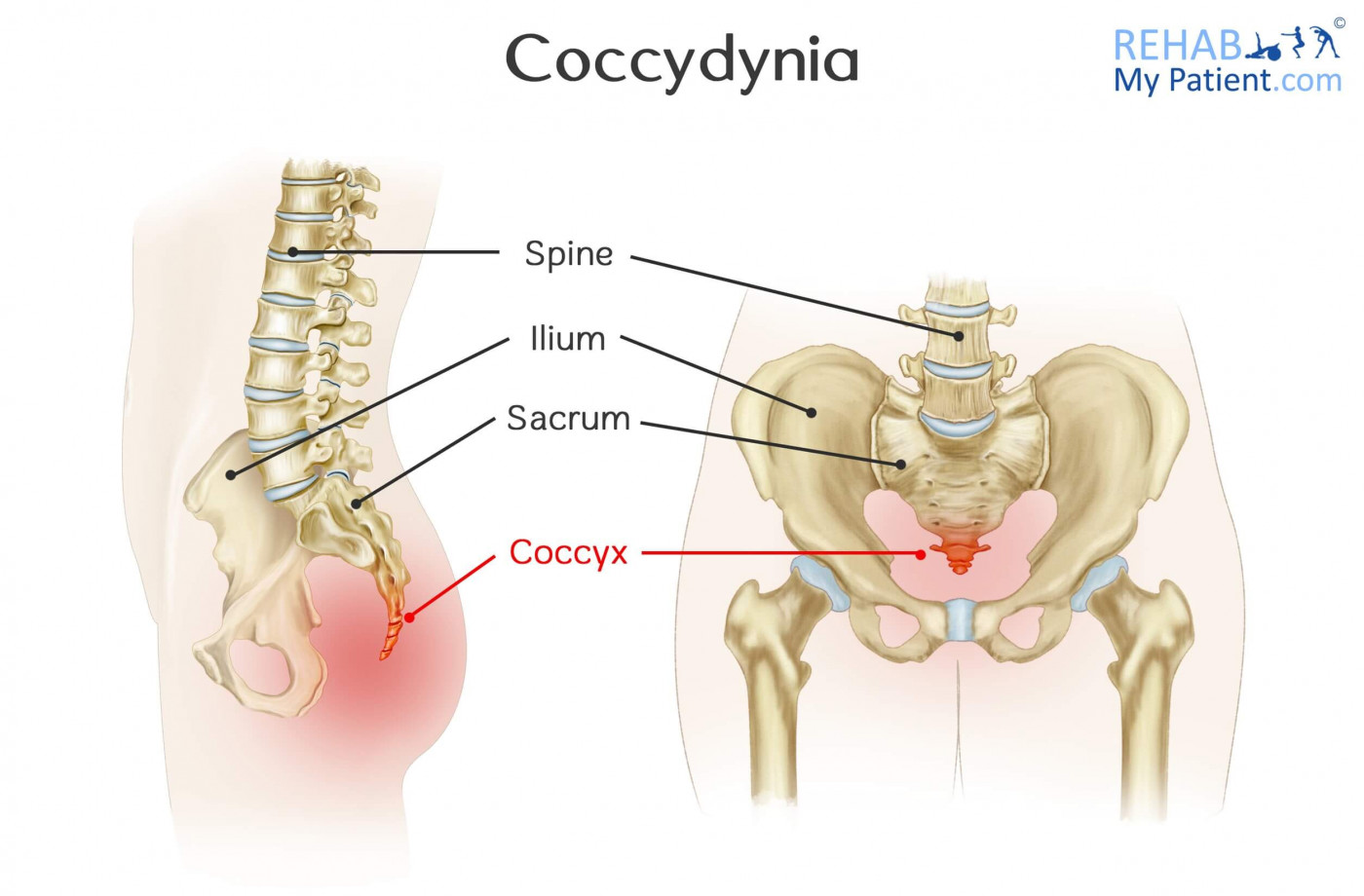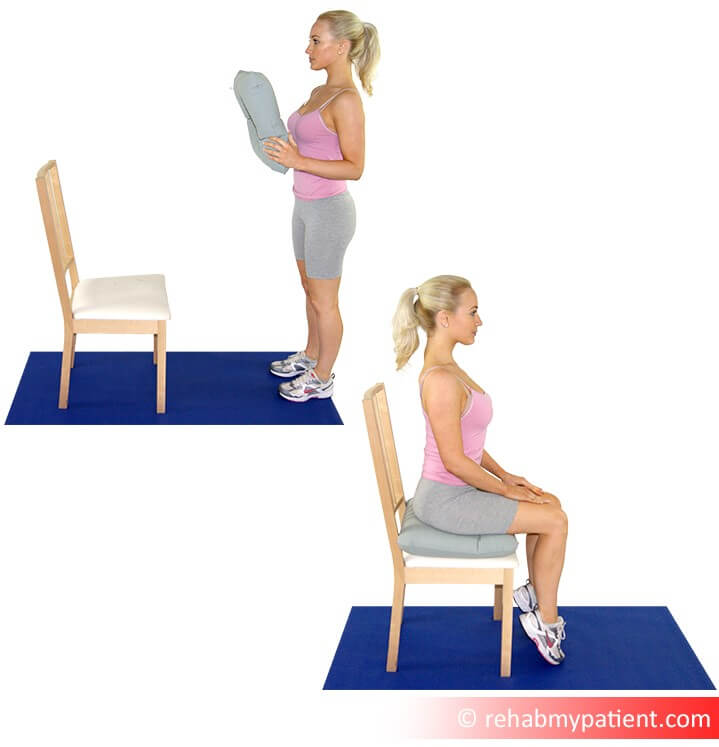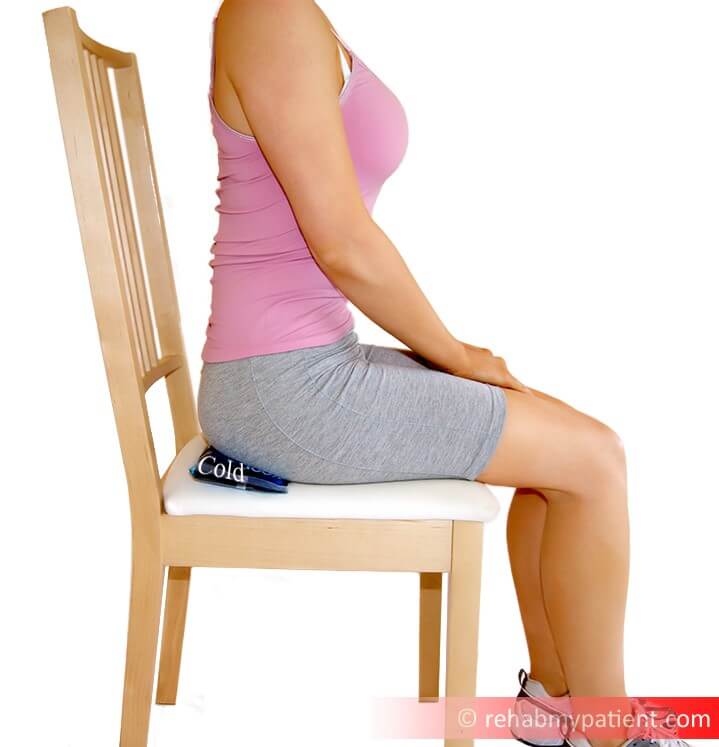Coccydynia
Opublikowano dnia 03rd Dec 2017 / Opublikowano w: Miednica , Kręgosłup lędźwiowy

Coccydynia is an inflammation of the coccyx that causes pain deep between your buttocks. It is often associated with tenderness and pain at the tailbone’s tip. Most of the time, the pain will get worse when sitting. It commonly occurs from an injury, but there are instances where it can occur spontaneously. Coccydynia can also be referred pain from the lower back.
Coccydynia Anatomy
Coccydynia occurs within the tailbone, at the lower part of the spine, which is representative of a vestigial tail. The name comes from the Greek word meaning cuckoo because of the appearance of the coccyx looks like a cuckoo’s beak. Three to five fused vertebrae make up the coccyx. On the ventral side of the coccyx, it is slightly concave while on the dorsal aspect it is slightly convex. Both sides have transverse grooves showing where the vestigial units were once fused. The coccyx is attached to the sacrum stemming from the dorsal grooves being attached with either a true synovial joint or a symphysis, as well as the anococcygeal ligament, coccygeal muscle and the gluteus maximus muscle.

One of the most common ways to cause coccydynia is from a fall, and typically this will occur when you land on your back side. The most common of these fall is slipping down some stairs, and the step catches your tailbone. Other common falls include slipping on ice and landing on your tailbone. If you fall heavily, you may need to rule out coccyx fracture, although even if this is found, it’s generally not treated and left to heal on its own accord.
One of the main issues with coccydynia is that the coccyx become chronically inflamed, so this condition can last months. It is very important to take whatever steps (see below) to reduce inflammation. It can take time to get the inflammation out, but keep at it.
How to Treat Coccydynia:
- Anti-Inflammatory Medication
Common anti-inflammatory medications can help to reduce all of the inflammation surrounding the coccyx, which is often the cause of the pain. Talk to your doctor first. As anti-inflammatories are sometimes not specific when taken orally, you could consider an anti-inflammatory rub or gel.
- Ice
Apply ice to the area multiple times per day for the first few days following the onset of pain. Simply sit on an ice bag, or lay on your front with the ice over your tailbone. Make sure the ice is wrapped in a tea towel so it is not too cold. Ice reduces inflammation and it’s one of the best ways to treat coccydynia. The ice needs to be used regularly for a 4-8 weeks so be persistent with it.
- Heat
As well as using ice to treat the pain, heat can also be used. Alternate between the two alternatives to achieve optimal relief. Try 5-10 minutes of ice, followed by up to 20 minutes of heat. Be careful with skin burns from the ice or heat if applied directly to the skin.
- Avoid Pressure
Avoid sitting in one position for an extended period of time. Placing pressure on the area will increase inflammation and pain, so you need to make sure you are getting up and moving every once in a while to alleviate pressure and inflammation.
- Customized Pillow
Using a customized pillow, you can help take some of the pressure off the coccyx whenever you are sitting down. For some individuals, a donut-shaped pillow will work perfectly. Others find that it is not the right shape for them and still places pressure on the coccyx. Some individuals find that a foam pillow in a U-shape or a V-shape is ideal. Having the back of the pillow open helps to avoid anything touching the coccyx, which works well for a number of people. Any type of sitting arrangement or pillow that helps to alleviate pressure from the coccyx is perfect.

- Stool Softeners
For those who are having pain in the tailbone from constipation or an increase in bowel movements, stool softeners, water and an increase in fiber all work to help alleviate some of the pressure on the coccyx.

- Physical Therapy
Manual therapists can apply mobilization techniques to the coccyx. Be prepared to lower your underwear though, when you are lying face down on the treatment table. Osteopaths occasionally use a per-rectal mobilization from inside, but your osteopath will discuss this with you first. Electrotherapy can help reduce inflammation, and acupuncture can get deep to the coccyx to also reduce inflammation.
Tips:
- Coccydynia is often caused by childbirth or a fall.
- Persistent pressure from riding a bicycle can cause the pain to begin in the coccyx.
- Sitting improperly can strain the coccyx and cause coccydynia to occur.
- In rare instances, a tumor around the coccyx can cause the condition to set in.
- Less than one percent of back pain conditions are the result of coccydynia. Women are five times more prone than their male counterparts are. Onset of the condition often occurs around 40 years of age.
Zapisać się
Zarejestruj się już teraz, aby skorzystać z bezpłatnego okresu próbnego!
Zacznij korzystać z Rehab My Patient już dziś i zrewolucjonizuj proces przepisywania ćwiczeń, aby zapewnić sobie skuteczną rehabilitację.
Rozpocznij 14-dniowy bezpłatny okres próbny